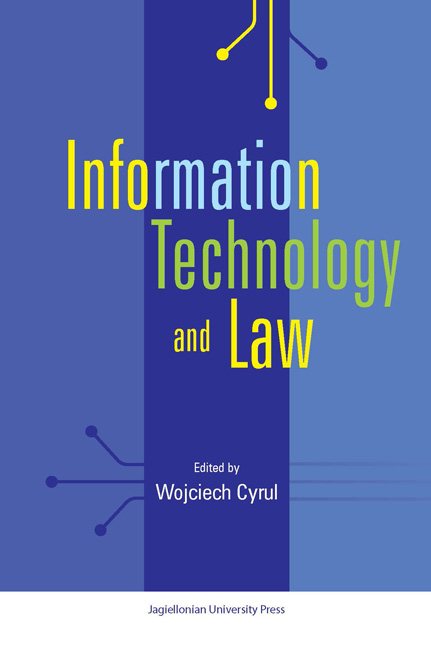Book contents
- Frontmatter
- CONTENTS
- Preface
- Chapter 1 Technological Destabilization of Law
- Chapter 2 Problems with the Storing and Presentation of Information
- Chapter 3 XML Models for Legal Documents: Current Polish Practices and International Standards
- Chapter 4 Similarity Analysis of Polish Legal Documents Using WordNets Semantic Relations
- Chapter 5 Consolidation of Legal Documents in an Electronic Format
- Chapter 6 A Three Dimensional – Code and a Question of the Normative Hyper-linking?
- Chapter 7 The Law, Labour Unions and Information Technology: Enhancing or Restricting Democracy at the Workplace
- Chapter 8 Protection of the Consumer in Digital Content Contracts
- Chapter 9 Procedure, Time and Imputation in Criminal Law
Chapter 4 - Similarity Analysis of Polish Legal Documents Using WordNets Semantic Relations
Published online by Cambridge University Press: 05 December 2014
- Frontmatter
- CONTENTS
- Preface
- Chapter 1 Technological Destabilization of Law
- Chapter 2 Problems with the Storing and Presentation of Information
- Chapter 3 XML Models for Legal Documents: Current Polish Practices and International Standards
- Chapter 4 Similarity Analysis of Polish Legal Documents Using WordNets Semantic Relations
- Chapter 5 Consolidation of Legal Documents in an Electronic Format
- Chapter 6 A Three Dimensional – Code and a Question of the Normative Hyper-linking?
- Chapter 7 The Law, Labour Unions and Information Technology: Enhancing or Restricting Democracy at the Workplace
- Chapter 8 Protection of the Consumer in Digital Content Contracts
- Chapter 9 Procedure, Time and Imputation in Criminal Law
Summary
1. Introduction
The effective and rapid acquisition and assimilation of information from various sources nowadays constitutes the main factor in both personal and business development. Finding a way for the automatic processing, categorizing, recognition and preservation of useful information is often a determinant not only of undertaking success or project, but more often a requirement assigned for the coming generations.
The aim of this work is to show how the use of the semantic analysis of legal texts is able to improve the quality of information provided by lawyers. This is particularly important in the information society in which we live and, as mentioned above, it is vital for the processing of relevant information.
The legal sources of information in the legal domain and in particular the texts of legal documents are sources which have been checked and confirmed and this permits their rapid and more effective processing. The auto-processing of texts in the domain of Polish law constitutes a crucial role in the aspect of digitalization principles and sources of coherent law. The forma-Aization of legal language can constitute here the factor which minimizes the number of errors related to words relations like polysemy or homonymy in existing tools for disambiguation process of Polish texts – in general. We can also use these assumptions in the corpora of legal texts and try to categorize desirable information, to choose what we are directly interested in.
- Type
- Chapter
- Information
- Information Technology and Law , pp. 67 - 78Publisher: Jagiellonian University PressPrint publication year: 2014



